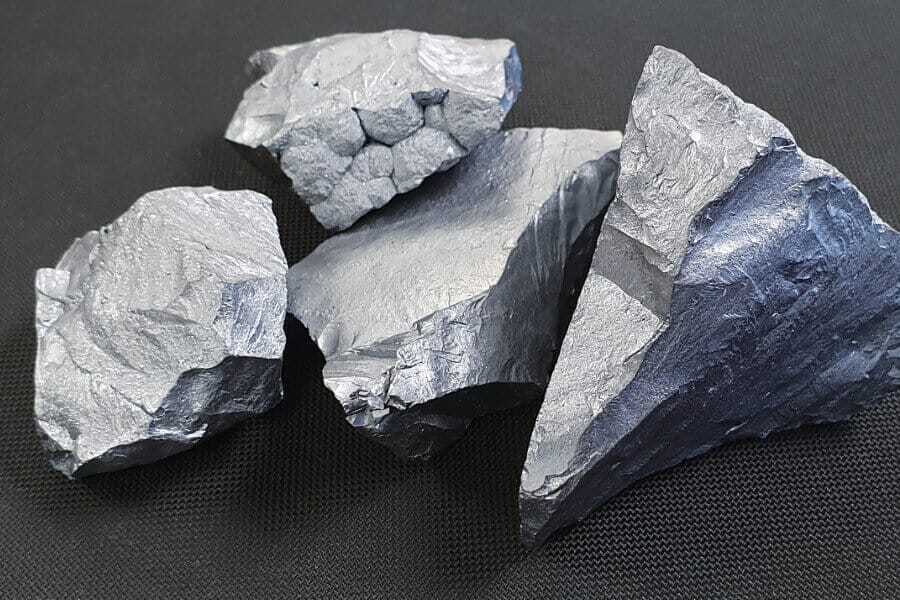Semiconductors are found in our everyday appliances and equipment. However, exploring the materials that make up the devices around us is very important. At Arizona State University, Professor Terry Alfred observed that various periods of our civilization have been named after materials: The Stone Age, the Bronze Age, and the Iron Age.
When you think about the impact of the Iron Age, you will see how the locomotive made out of steel and cast Iron was able to advance our civilization and opened up the West to other possibilities. Among these wonderful materials, Silicon has changed everything about our existence today. When we look at the impact of this material in integrated circuit platforms, it has greatly changed our lives via telephones, televisions, radios, and other electronics.
My question is, has silicon come to stay forever? Is there an alternative material that will one day replace Silicon as a semiconducting material in all its devices? Is there going to be a post-silicon age? This post will discuss Silicon and the various materials that could stand a chance against Silicon.
What is Silicon?

Silicon is a chemical element with the symbol Si and atomic number 14. It is a metalloid, meaning it has properties of both metals and non-metals. It is a natural resource. Silicon’s unique electrical properties and versatility makes it the cornerstone of modern electronics.
Silicon-based electronics primarily use silicon as a semiconductor material for fabricating devices such as transistors, transducers, integrated circuits, solar cells, and sensors and sensor packets.
What makes a semiconductor desirable?
A good semiconductor should possess all of these properties:
- Semiconducting Properties: it must have electrical conductivity between that of conductors and insulators. This property can be manipulated through doping to create n-type and p-type semiconductors, allowing for the creation of diodes, transistors, and integrated circuits.
- Good Electron Mobility: It should have reasonable electron mobility, which allows for efficient charge transport. This attribute is critical for the performance of high-speed electronic devices.
- Optoelectronic Properties: For materials that are frequently used in devices like LEDs and lasers due to their suitable bandgap properties and efficiency in converting electricity to light, this property is very important.
- Flexibility and Integration: allowing for applications in flexible electronics and displays, but can face challenges in stability and longevity is an important property in recent times.
- Wide Bandgap: This makes it suitable for a wide range of temperatures and applications, including both analog and digital circuits.
- Oxide Layer Formation: Oxide layer can serve as an effective insulator and is essential for creating MOSFETs (Metal-Oxide-Semiconductor Field-Effect Transistors) and other devices.
- Compatibility with Existing Manufacturing Processes: The established methods for doping, etching, and growing thin films on silicon allow for the mass production of silicon-based devices, facilitating innovation and development in the semiconductor industry.
- Mechanical Strength: Silicon wafers are relatively strong and can be processed into thin slices, making them suitable for fabrication while maintaining structural integrity.
- Abundance and Cost: It should be available and safe for manufacturing compared to more exotic materials.

It will interest you to know that while Silicon as a semiconductor satisfy and outperforms most non-silicon semiconductors, its low optoelectronic property and rigidity (non-flexibility) makes it quit a second choice for certain manufacturers.
Why exploring Non-Silicon based Semiconductors?
To be honest, the abundance of Silicon which has made it relatively cheap is the ultimate advantage it has over non-silicon semiconductors like Graphene, Organic and Organometallic semiconductors and Gallium Arsenide. In recent years, the world has been thinking smarter. Smarter here means more conducive gadgets, lighter weights, more human friendly and especially, so much more flexibility.
Some of the reasons scientists are exploring non-silicon-based semiconductors include:
- Better Flexibility/customization: This desire had forced scientists to look for alternative semiconductor source that can satisfy modern desires and designs. For example, a research team at San Diego University has been working on a wearable skin patch photoacoustic sensor that will monitor biomolecules such as hemoglobin in deep tissue and give clinicians access to key data that will allow them to diagnose tumors, organ malfunction, and other health concerns. Definitely, this sensor is not going to be Silicon based. It is most likely going to be an Organic semiconductor.
The desire for cinematography to evolve has also led to some discoveries OFETs (Organic field-effect Transistors), OLEDs (Organic Light Emitting Diodes) and even OPVs (Organic photovoltaics that is doing the same jobs in solar panels as silicon-based transistors.
Silicon based semiconductors are rigid and typically requires a solid substrate, Organic Semiconductors, Perovskite offer flexibility, allowing for applications in flexible electronics and displays.
- Lower Weight: Non-silicon materials can often be lighter than silicon, which is advantageous in aerospace and portable electronics where weight is a critical factor.
- Potential for Novel Applications: Non-silicon materials can enable the development of new technologies, such as quantum dots for advanced displays and photonic circuits for faster information processing.
Conclusion
While non-silicon-based electronics present these advantages, they may also encounter challenges such as manufacturing complexity, low carrier mobility limited by static and dynamic disorder, and, in some cases, reliability. However, ongoing research and development continue to address these issues.
The need to choose between silicon-based and non-silicon based semiconductor still depends on certain criteria. We only hope that the advancement in science will deliver to us a material that will replace silicon and maybe leading to a new age; a post silicon age.

